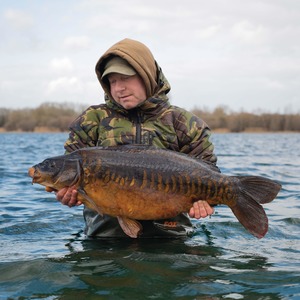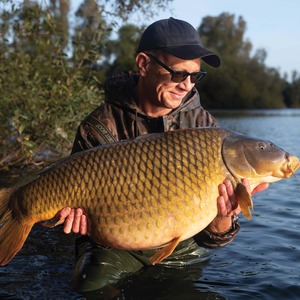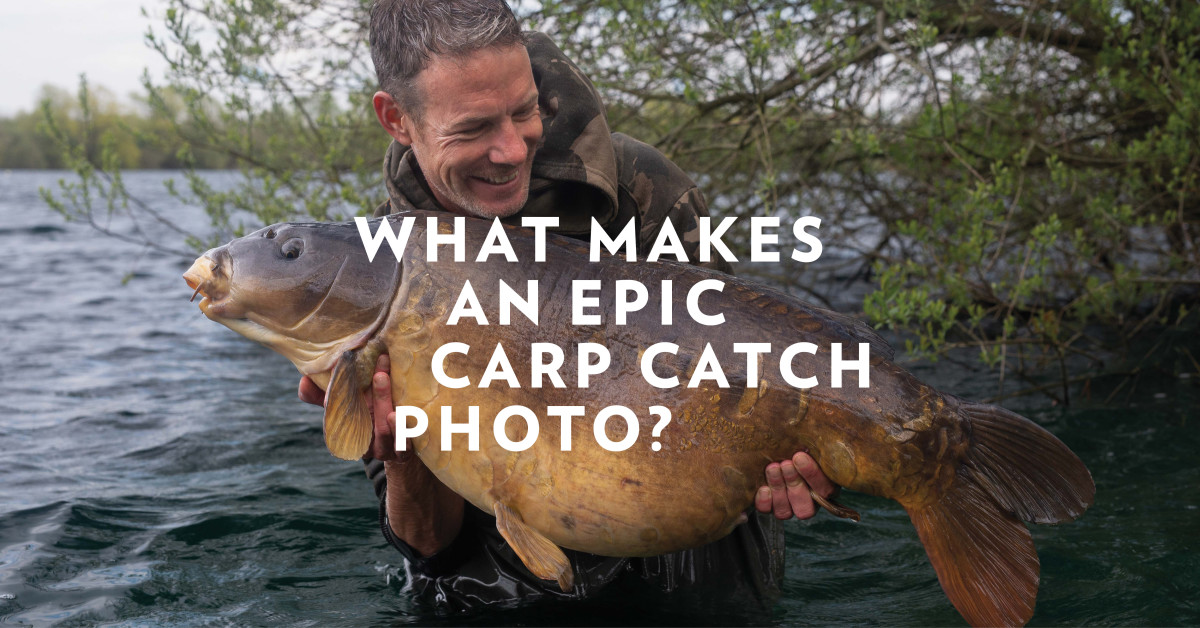
11 Considerations To Nailing The Perfect Pic!
What elements turn a snap into a memorable portrait, one you would print and put on your wall?
We all love a photo that captures the drama and euphoria of an epic catch and portrays the majesty of a special carp. But what are the elements that turn a snap into a memorable portrait, one you would print and put on your wall? Martin Lawrence takes a closer look…
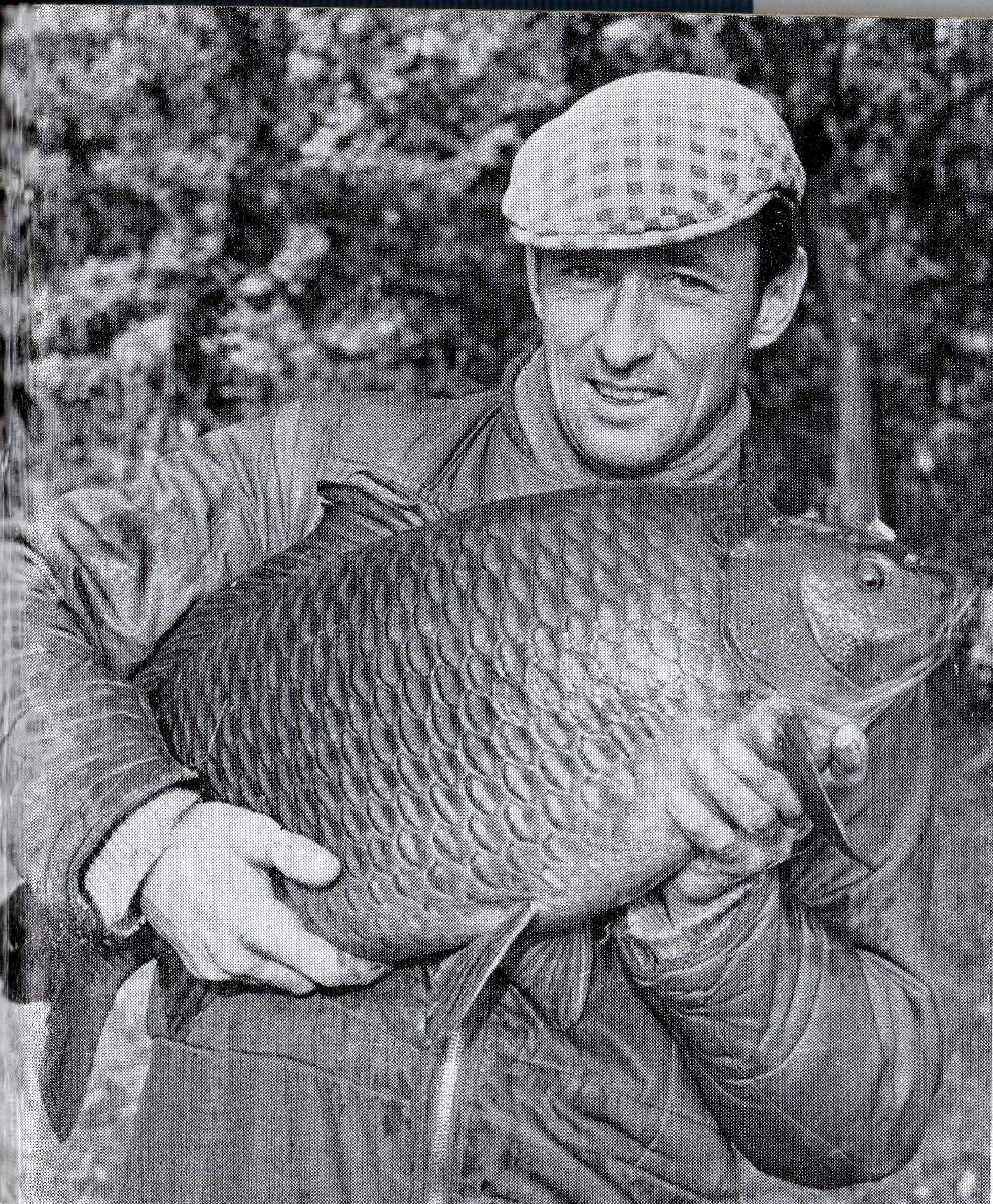
Striking a carpy pose?
Most carp catch photos are formulaic, square on, taken from kneeling height with the angler looking down at the head or the tail. If you can come up with something a bit different, it really catches the eye. When I was a kid, the first image that blew my mind was of Bill Quinlan cradling a 24lb mint common from Redmire in Jack Hilton’s classic book Quest For Carp. You could say that Bill pioneered the ‘carp cuddle’. The photo was obviously taken by someone who knew how to handle a film camera, as the focus is superb, revealing the amazing details of the scale-perfect fish. This one also benefits from an ultra-carpy flat cap and an even carpier one-piece boiler suit.
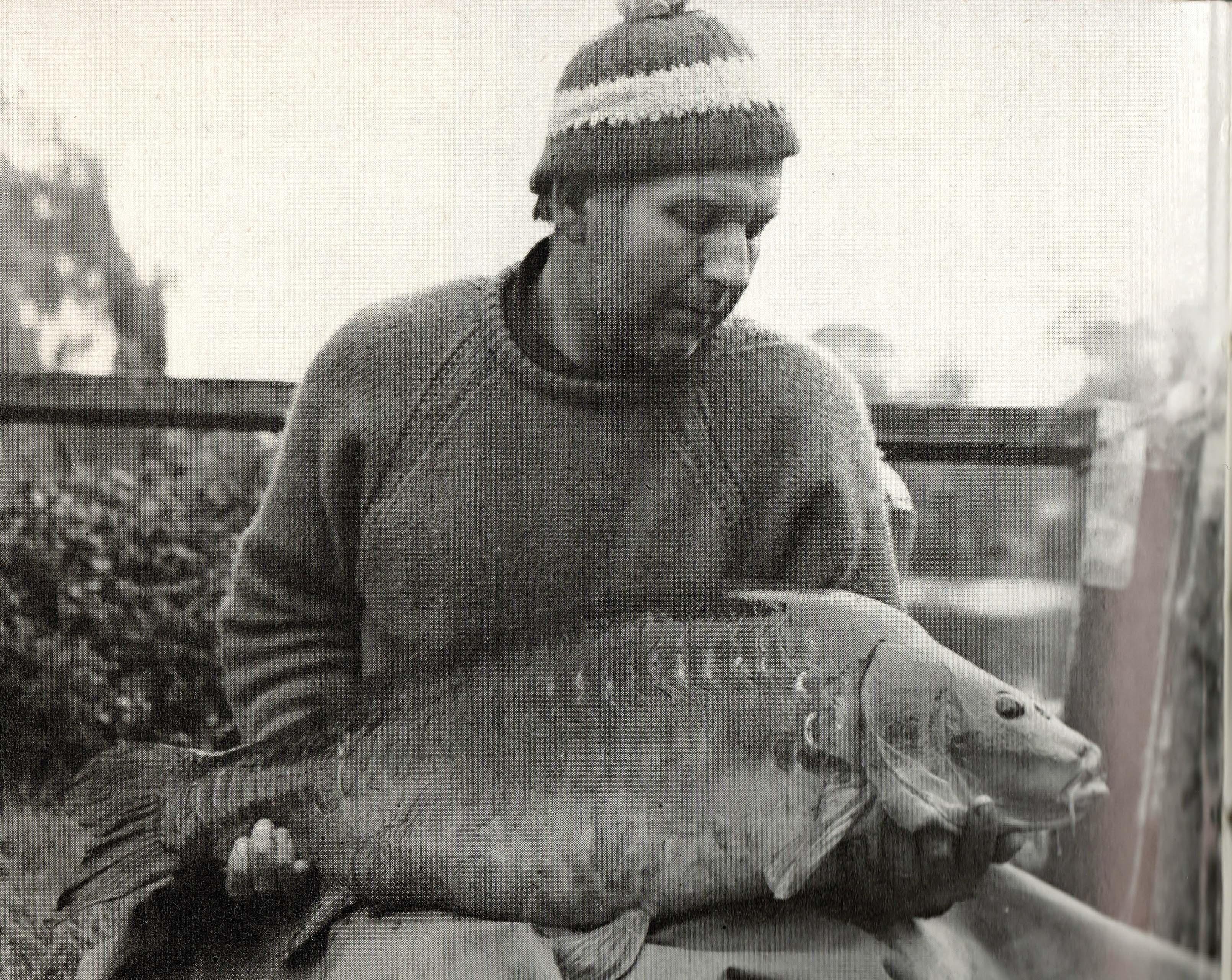
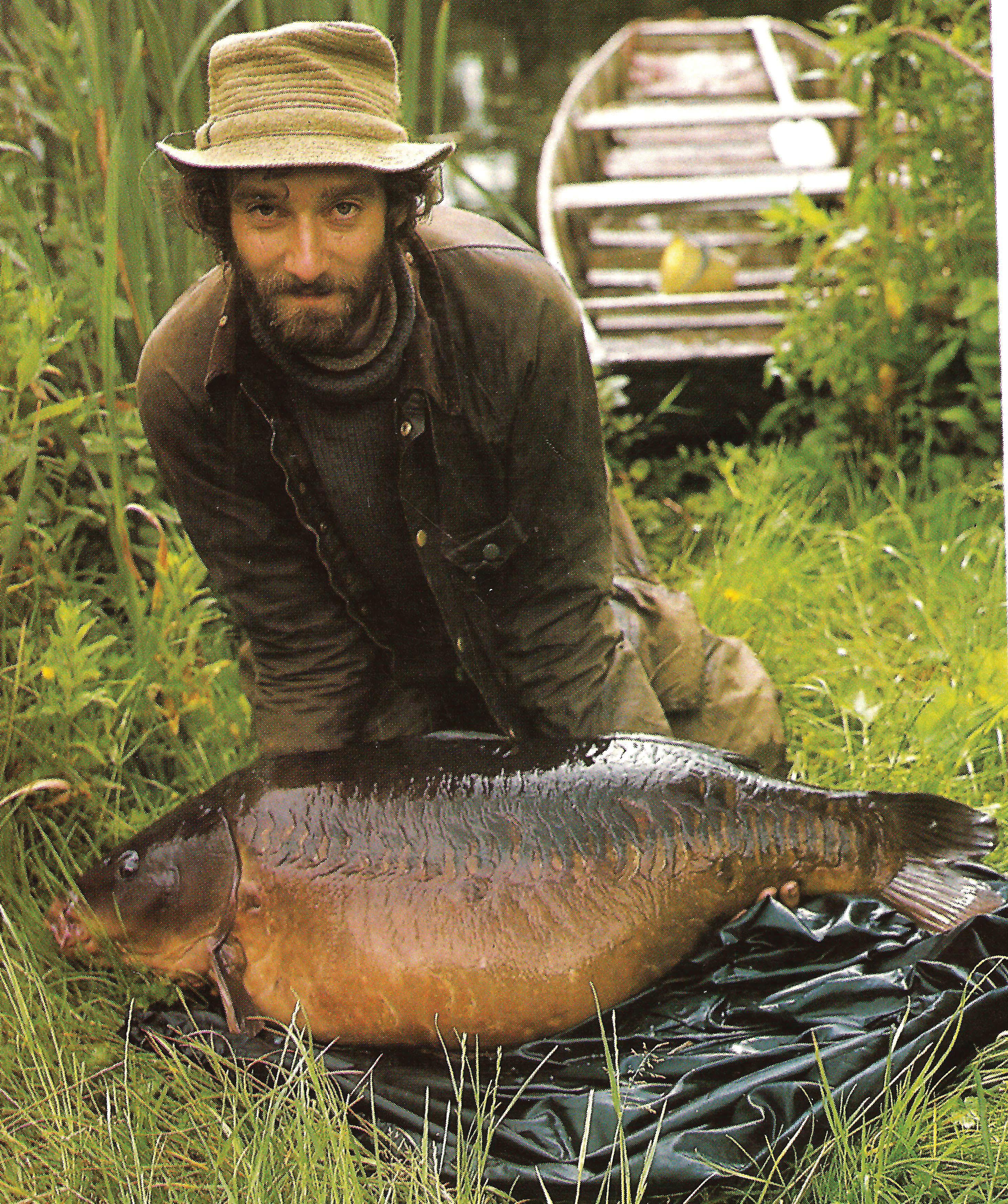
Colour or black and white?
There was a time when all serious photographers only shot in black and white, even when colour film was available. And in carp fishing, the early iconic photos in books are all black and white, possibly because it was prohibitively expensive to print colour images at the time. Take the image of Jack Hilton with his first Redmire Pool carp from the late 1960s: it’s a colossal fish for the time, an epic Leney from the Mecca of carp fishing. Add to that, the pose is cool, with Jack kneeling down, cradling the fish on his lap, staring down at his prize. And Jack is wearing an ultra carpy jumper and a dapper bobble hat (a carpy hat always helps, I think!).
If I was being critical, the composition is not great with the rail in the background, but it is the instantly recognisable dam rail at Redmire which gives us context for the location. And while we’re on the subject of Redmire monsters, the colour photo of Chris Yates with the record is one of the all-time iconic images. Is it a great photo? Not particularly, I’ve always felt the star of the show, the Bishop, being on the ground at the bottom of the frame is relegated to bit-part player and my eye is drawn to Chris and then the punt. Having said that, the colours are spectacular, which I think always trumps a black-and-white carp catch image. And it’s Yatesy with the 51lb+ record carp, and he’s also wearing a carpy hat, which makes it CAF!
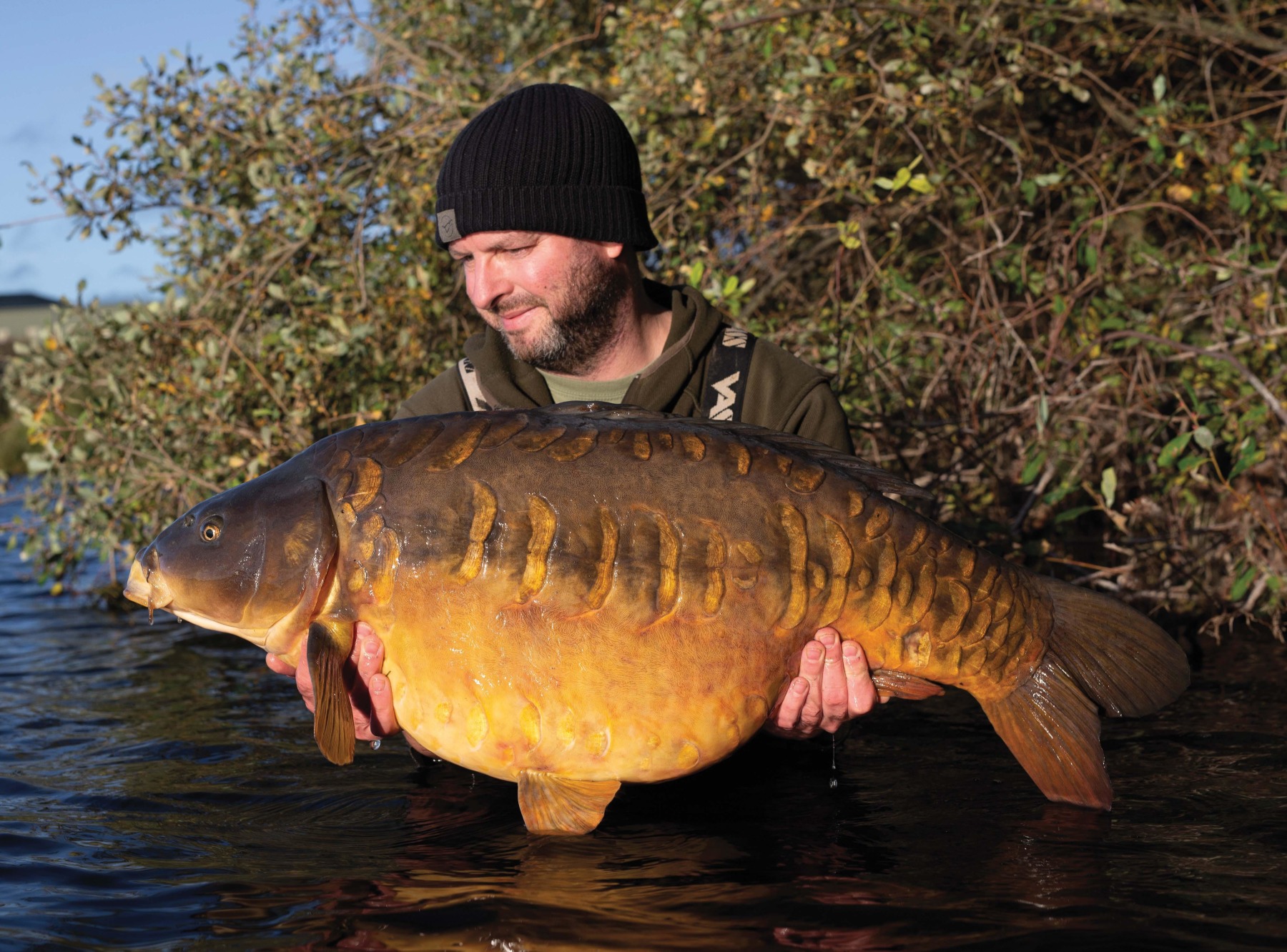
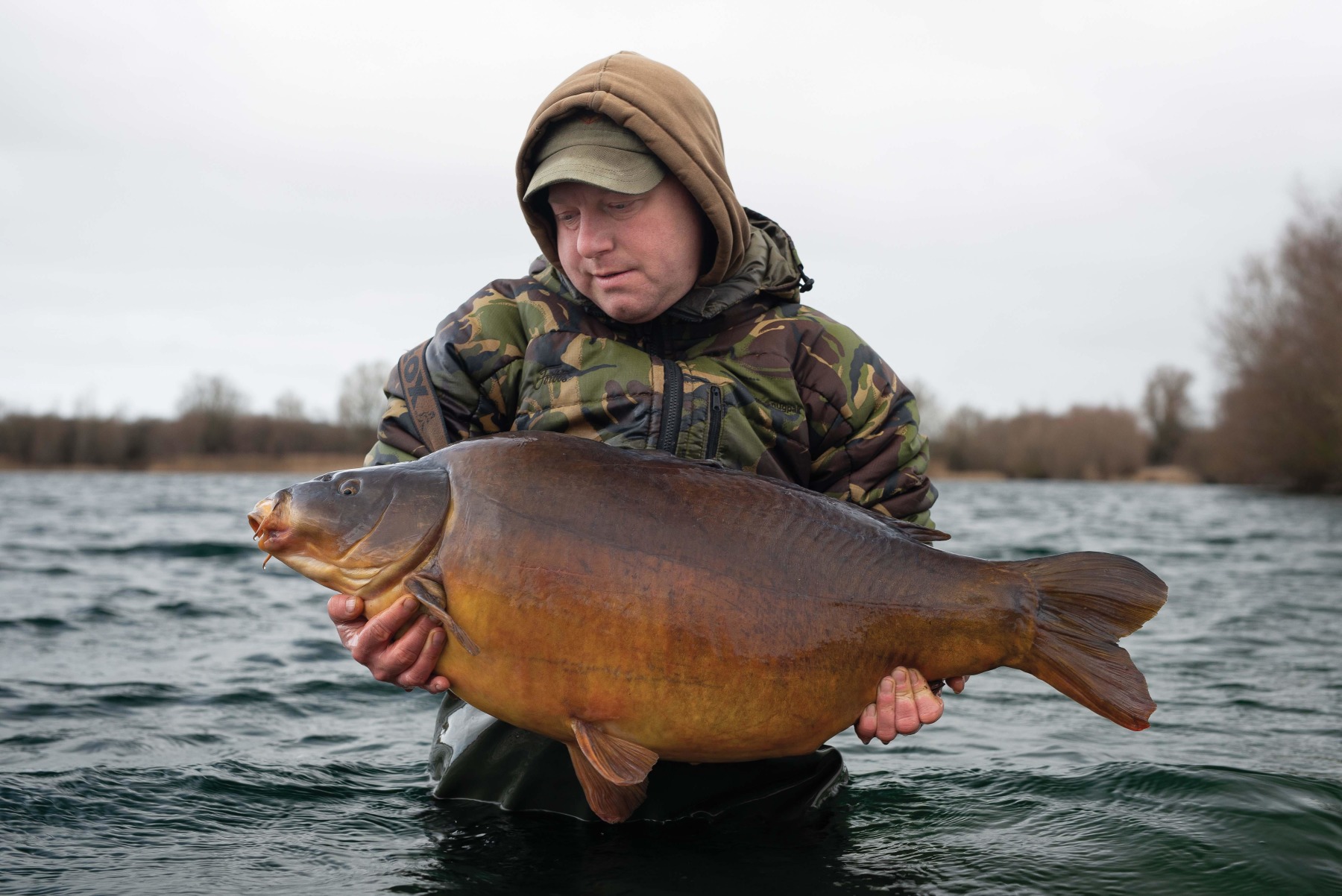
Tightly cropped?
On balance, I tend to favour the tightly cropped approach, such as this photo of Lee Price with a superb 40 from St Ives Lagoon. For this, I like to use a 50mm lens, which enables you to get in close and personal without distorting the proportions of the fish while retaining a decent depth of field at wide apertures. However, there is also something captivating about a wider shot that portrays something of the lake, such as the image of Boots from last winter, in the water with the big Meadow leather.
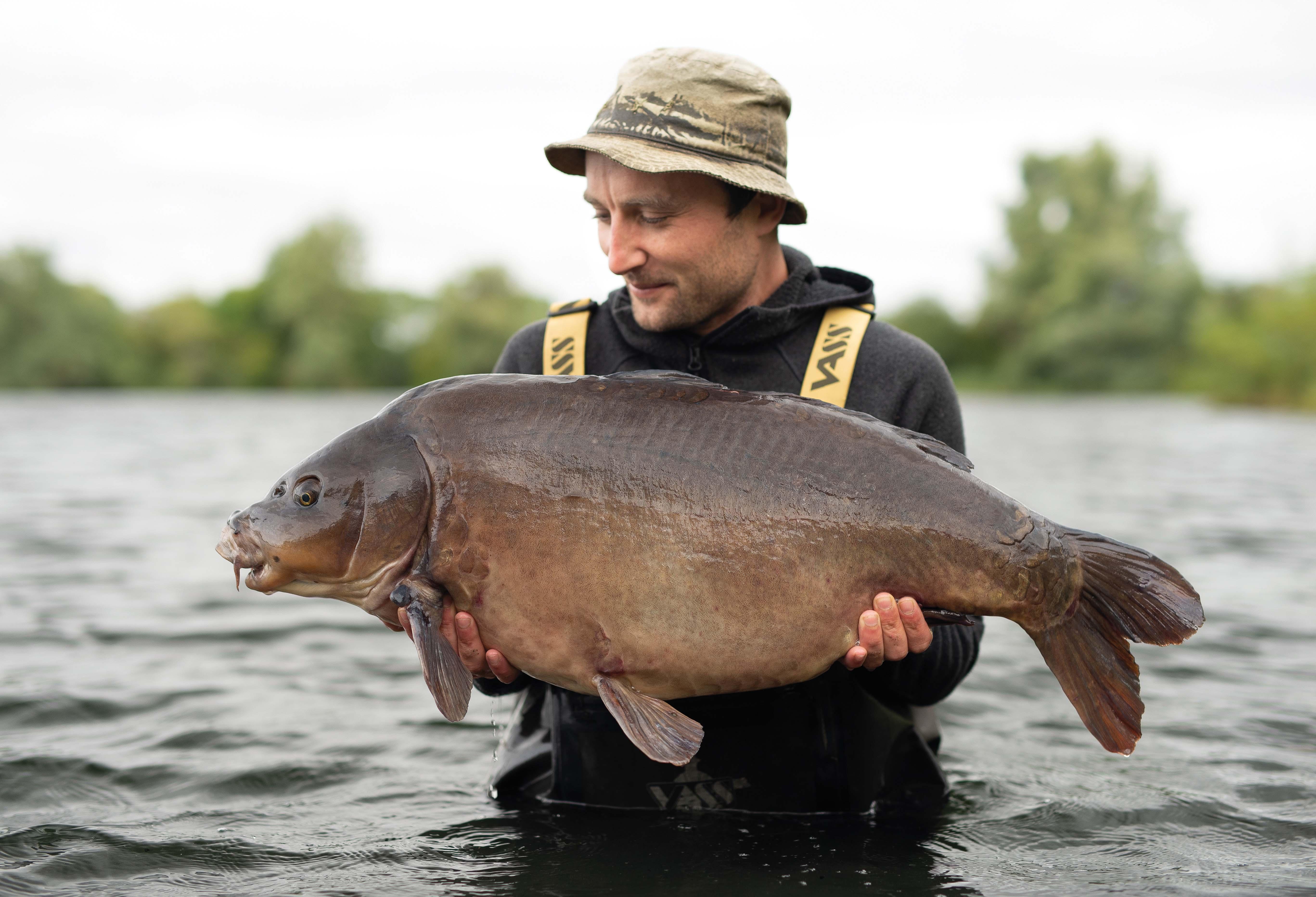
Blurred background?
A lot of people, including me, love shooting with a wide aperture (f/1.4 or f/1.8) because it gives a shallow depth of field/focus and a blurred background, as in this photo of Tom Stokes with an old grey Shallow pit 30lb mirror. You can see the distant background is way out of focus, which makes your subject ‘pop’. However, shooting with smaller apertures (f/4 to f/7) makes it much easier to nail focus on both the angler and the fish, as well as providing more detail in the background, which, as mentioned, you may want to include as it adds atmosphere and detail to the story you are trying to tell with your photo.
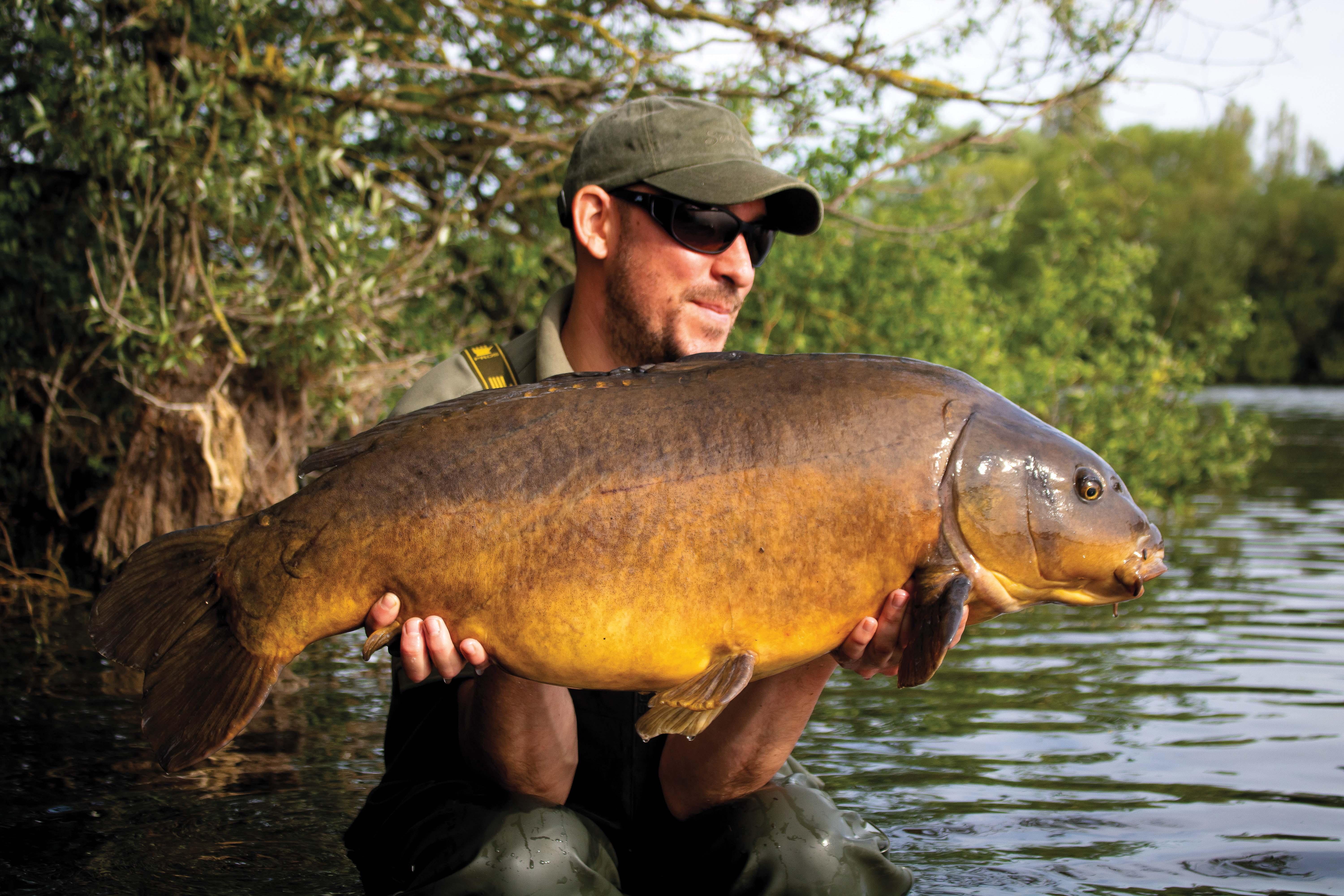
Super sharp or seventies soft focus?
I’m as guilty as the next photo nerd of obsessing over ‘sharpness’ in my images. But many of my favourite images aren’t super sharp. I’d say don’t get too obsessed with it being pin-sharp. Focus instead on creating mood and atmosphere, using the colour, direction and intensity of the light to highlight your subject in interesting ways. After all, in the vast majority of cases, your photos will be viewed on social media where they have been heavily compressed, or on a phone where the size is forgiving on any lack of sharpness.
Portrait or landscape?
Until recently I had been firmly in the landscape camp for trophy shots, but even an old codger like me has had to accept the rise and dominance of social media, and portrait shots command more real estate on the already minimalist platforms we mostly use to consume our daily fix of carp images. So, I’m a recent convert to portrait shooting, and I particularly like a low-angled water photo in this format. Having said that, if I’m looking at images on my iPad or printing them out, I still prefer landscape. How about you, old skool landscapes or social media portrait style?
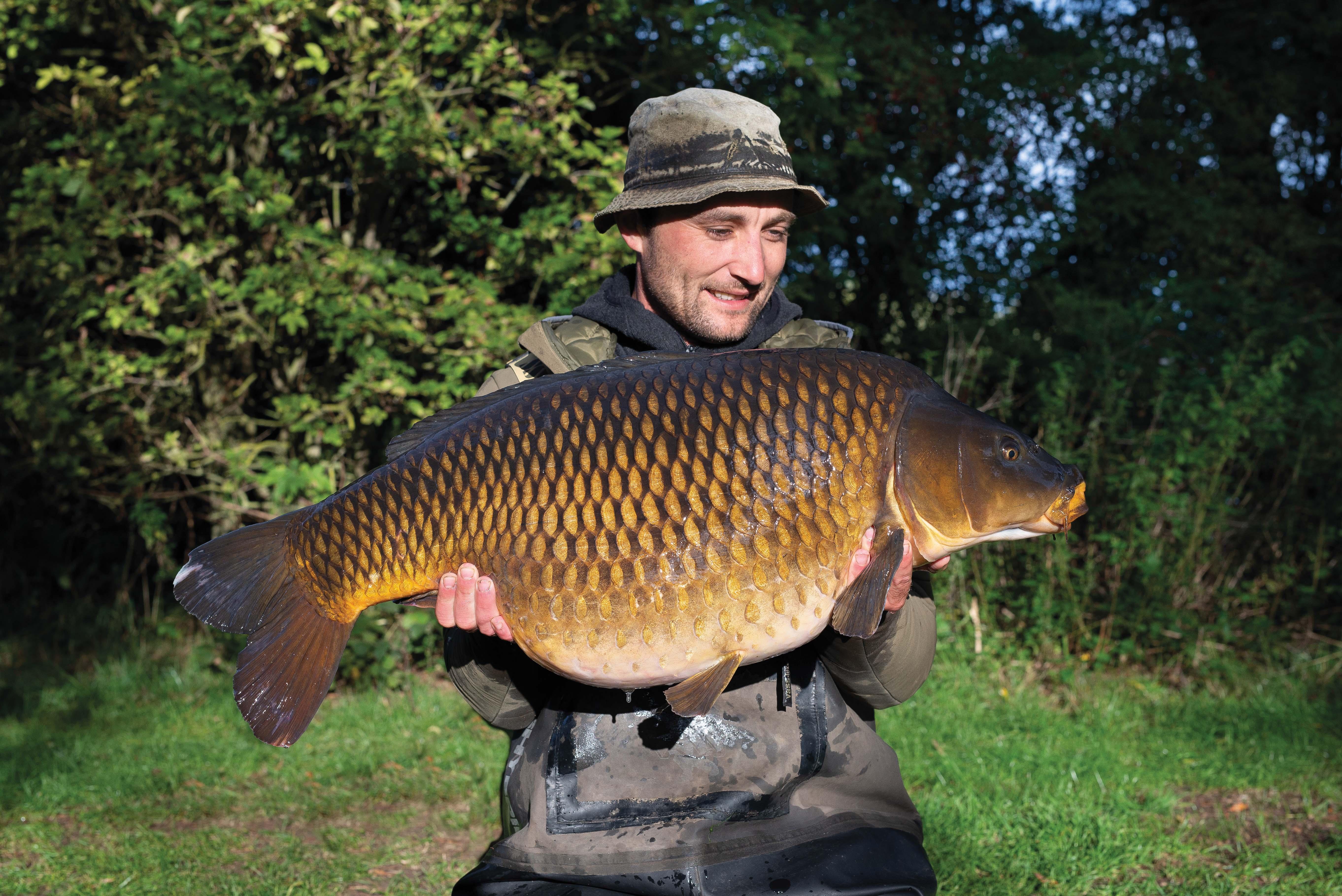
In the water or on the bank?
I nearly always prefer water shots. The light out in the lake tends to be more even, the backdrops less problematic and often more dramatic, giving a strong sense of time and place. On the bank you’re often battling the dreaded dappled light, fretting over ugly vegetation and tree trunks growing from angler’s heads. This is where a large aperture comes into its own and a razor-thin depth of field can blur out all the irritations. However, if you can find a nice verdant bush (remember them?) and the swim is big enough to place the mat well away from it, the results can still be epic, even with a relatively small aperture of f/5.6.
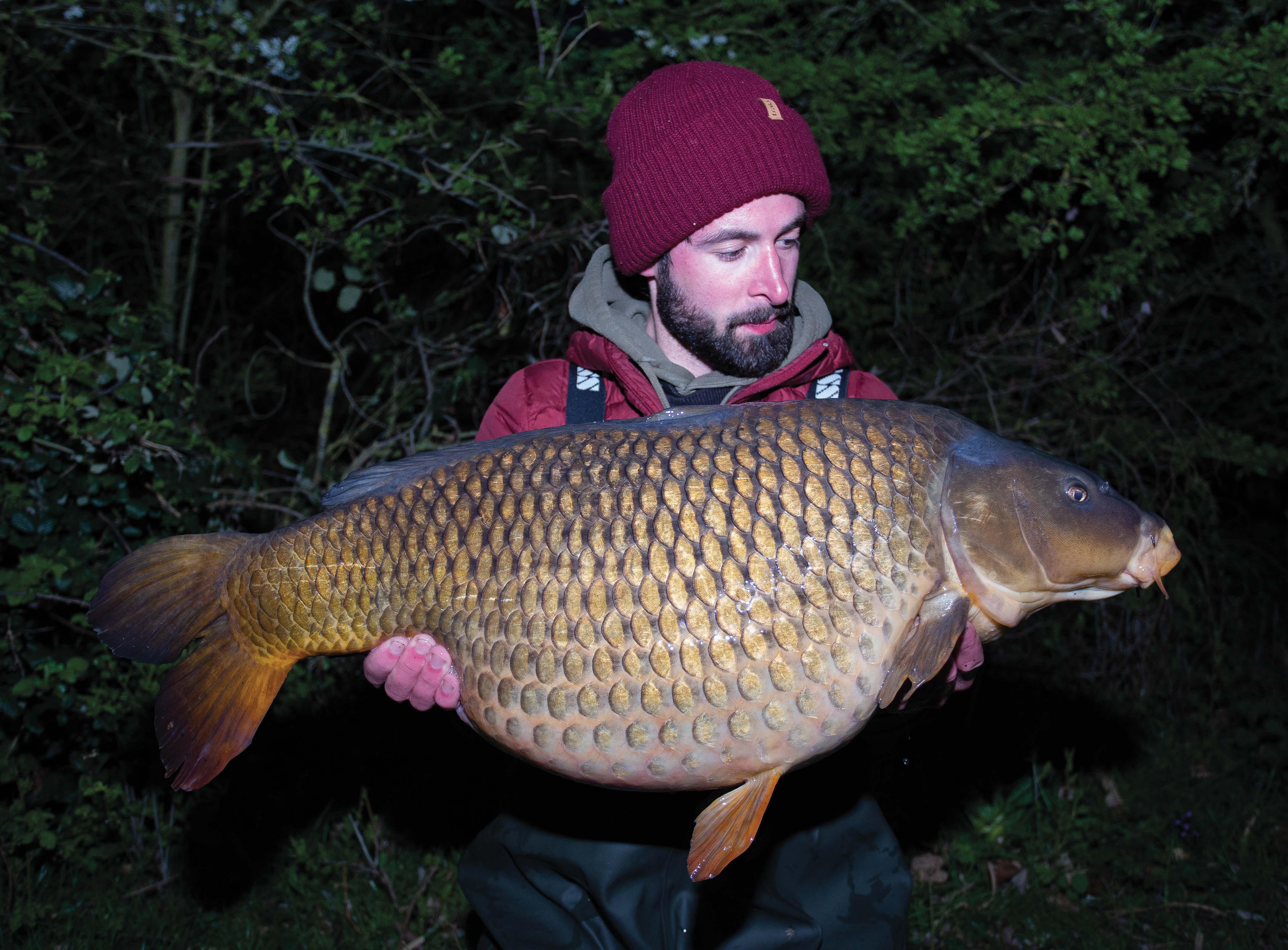
Night-time or day shots?
I’m not a big fan of night shots. They rarely do the fish justice. The colours can take on weird hues under the lights, and you’re always battling against red eye and ferocious glare. However, with a bit of practice and familiarity with your camera, lights and the use of a good quality polarising filter, it is possible to get decent night shots, giving them a certain carpiness, but maybe not the epic quality of a good daytime shot.
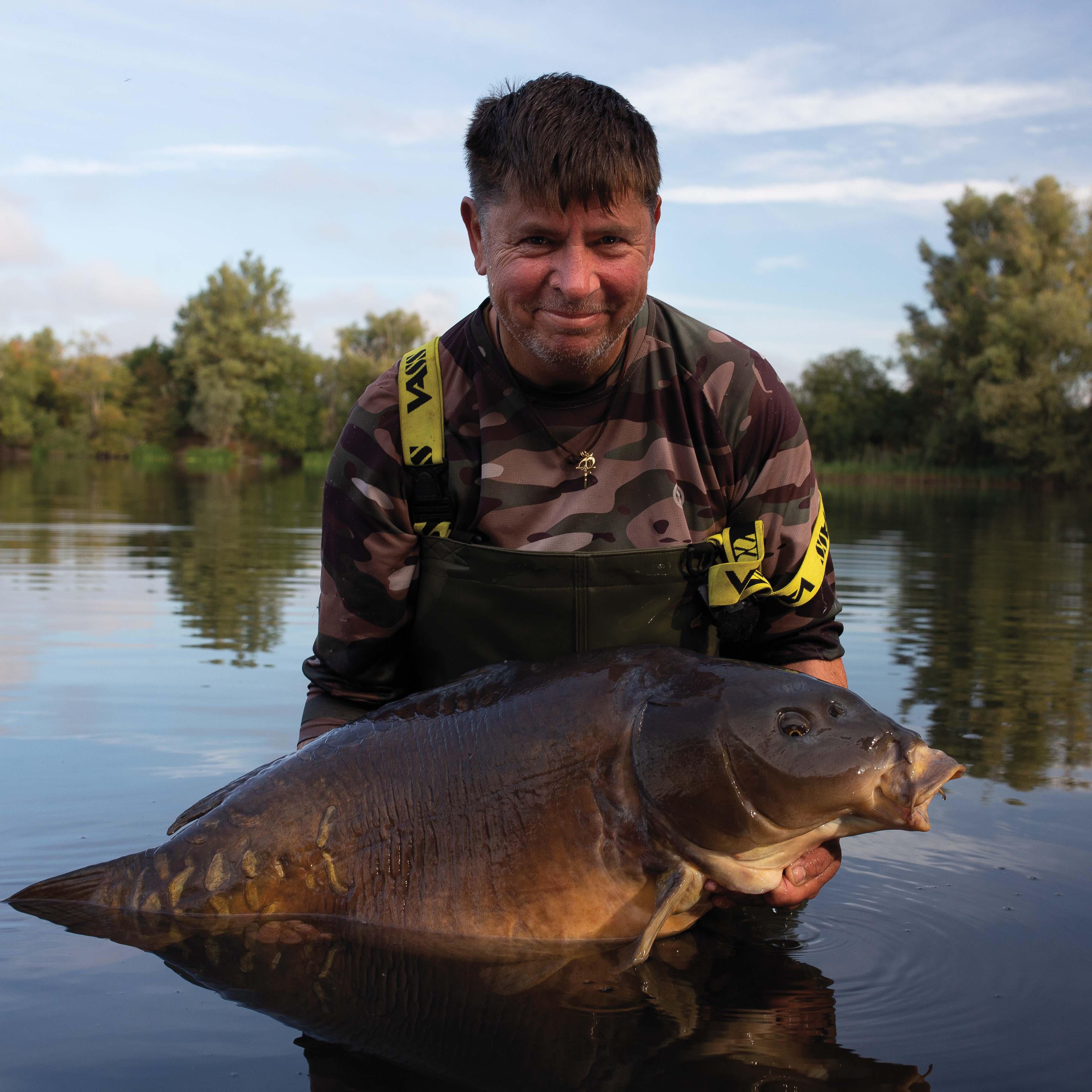
Looking at the camera?
In the past I’ve tended to frown upon, and on occasion ridicule, anglers who stare at the camera while holding their prize catch. For some reason, in my mind, it creates a rather smug ‘look what I’ve got’ vibe. Also, we are drawn to human eyes, so our gaze tends to focus on the angler, not the fish. However, recently I’ve had a change of heart, and instead of barking ‘look at the fish’ during my photo shoots, I’m increasingly saying ‘Look at me’ as well. With the angler looking at the fish, it’s more of a voyeuristic experience, a feeling that you are watching a personal moment of someone with the object of their desire. But an eyes-at-the-camera shot invites you in, and is engaging in a more direct way. They say eyes are the windows to the soul, so this approach perhaps reveals more of the true emotion. The angler’s emotion, I mean—I’m guessing the fish are invariably pee-ed off. Who knows? Anyway, for me, the jury is out on this one. What do you think?
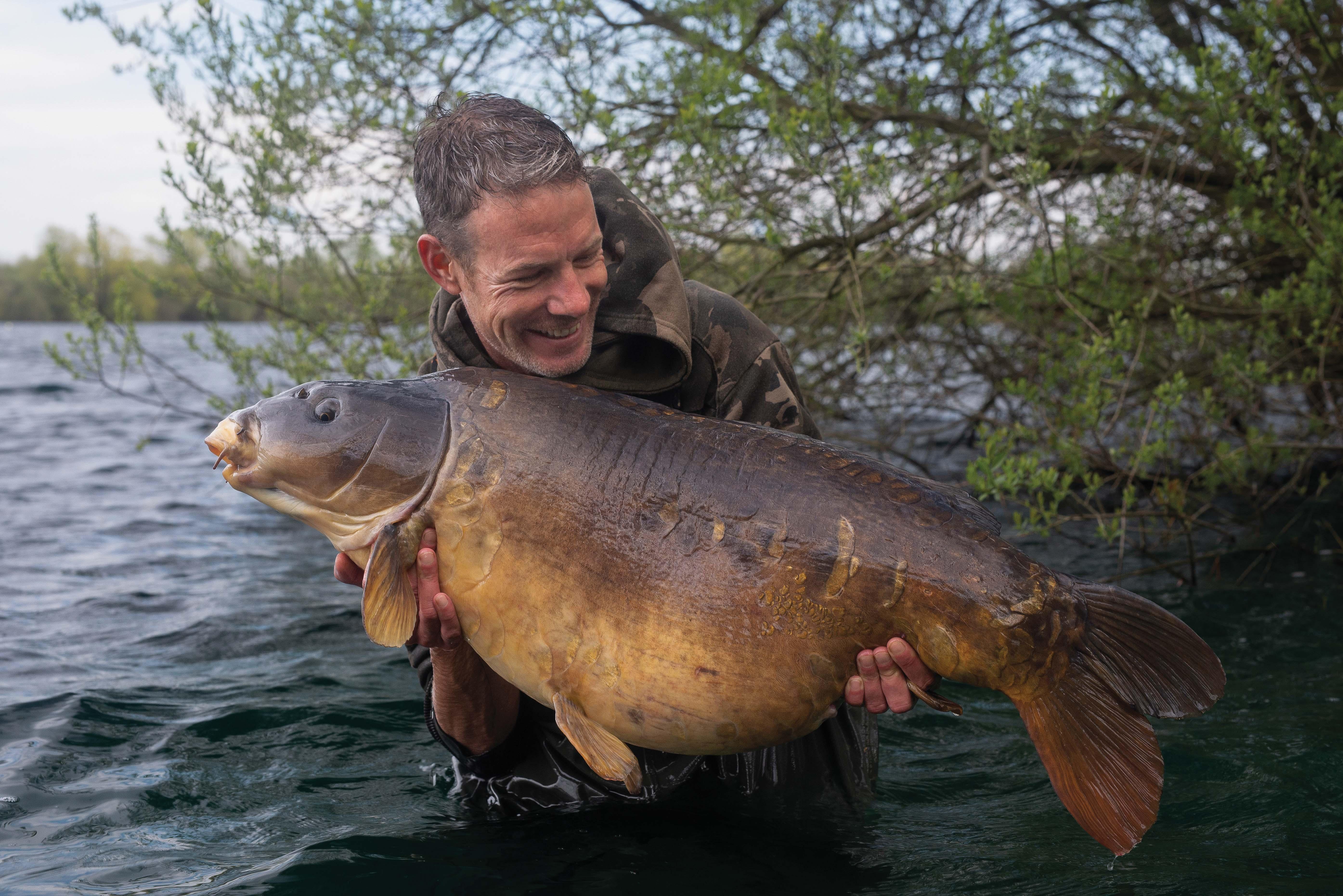
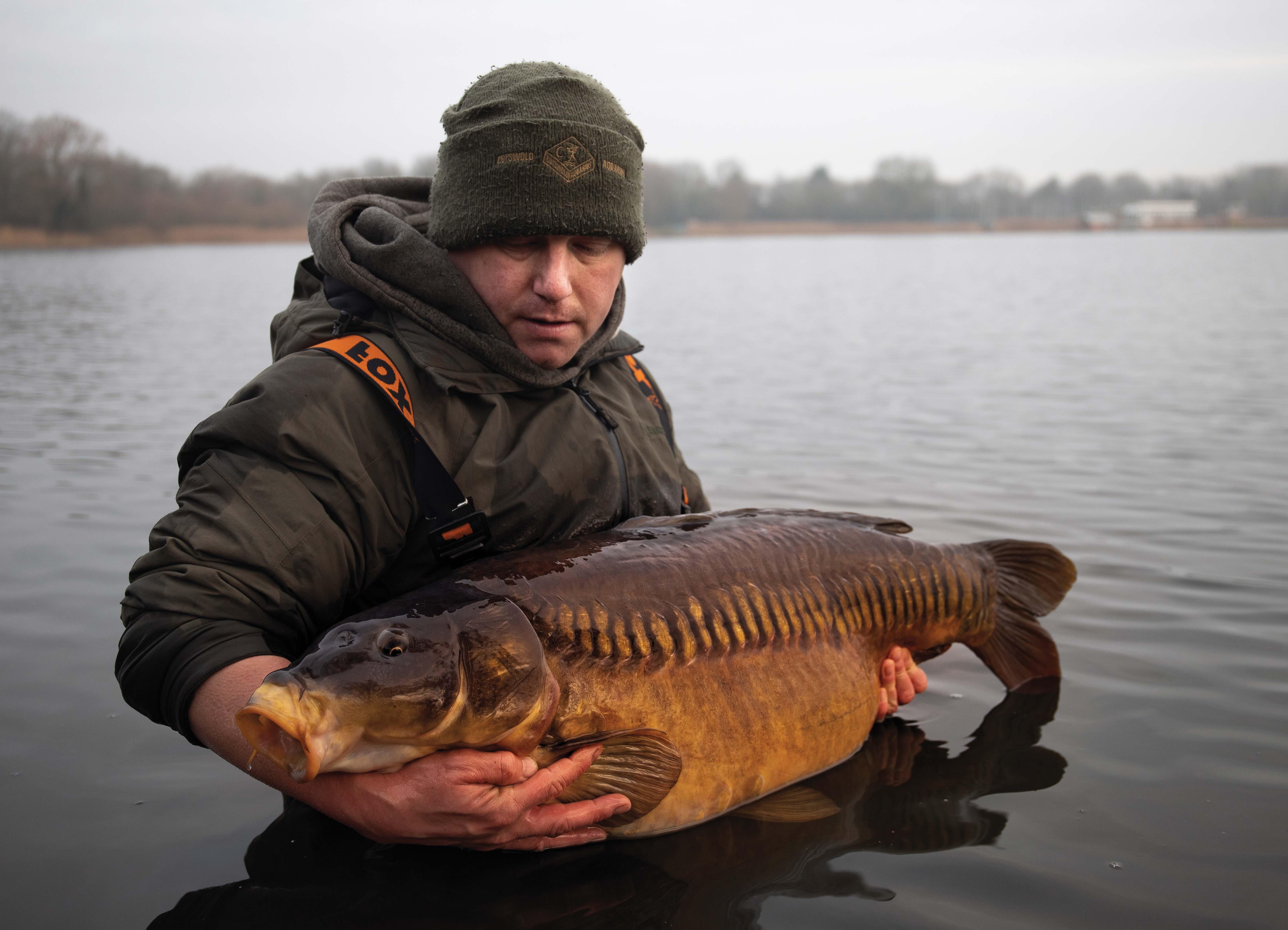
To smile or not to smile, that is the question!
My preference is always super smiley shot, after all, it’s meant to be a fun and joyous moment. Joe [Morgan] was buzzing when he caught Starburst from Longreach and boy does it show. At other times, the capture feels more like a relief after a long and arduous campaign, and feeling exhausted, smiling may not be high on the list of things to do. And some people are just less smiley than others—miserable sods! I guess the most important job, as the photographer, is to try to capture a moment that reflects the personality and feelings of the angler.
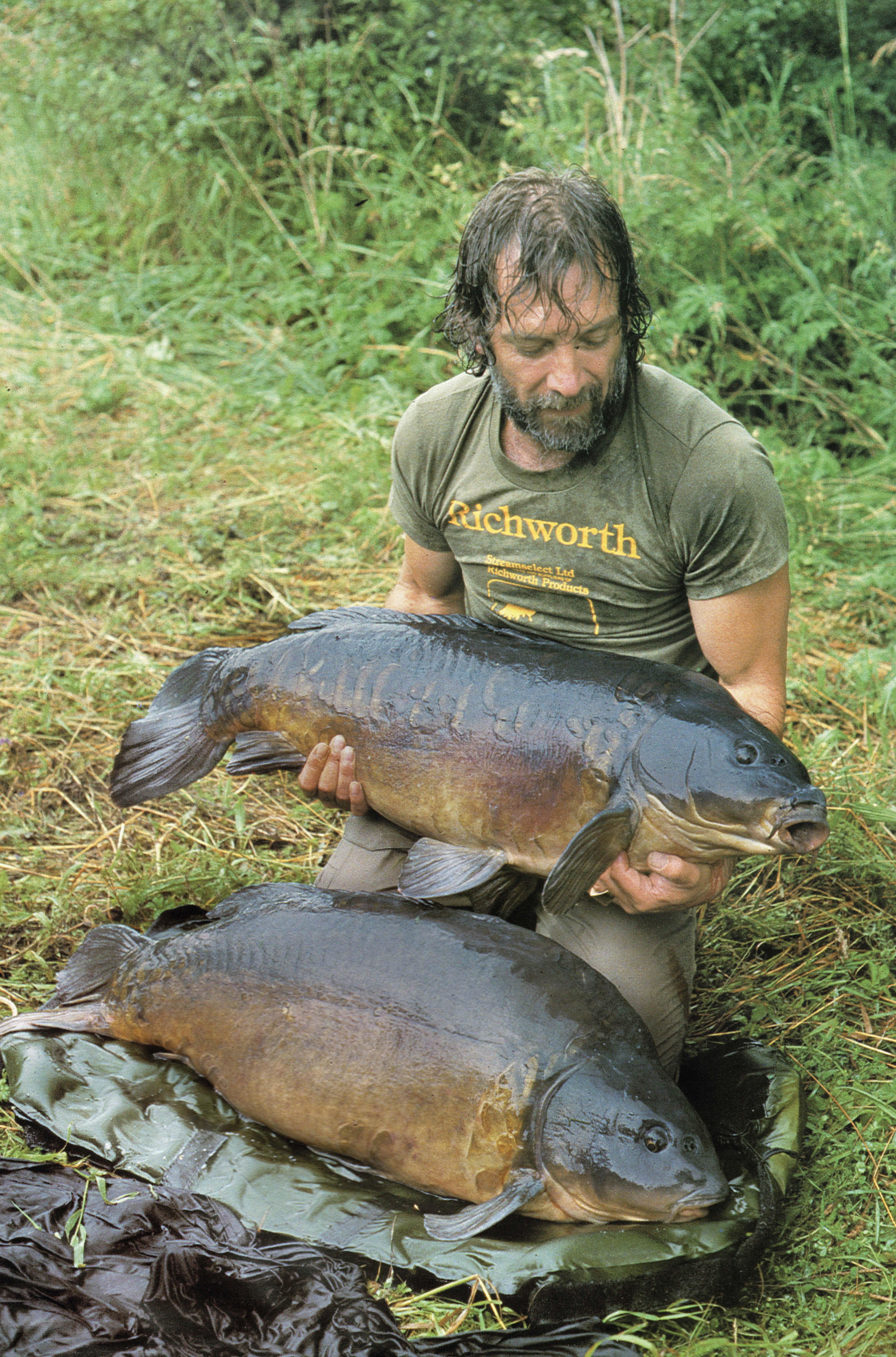
Brace or single fish shots?
This is a tricky one, as clearly the brace shot of Pete Springate with Mary and Mary’s Mate from Wraysbury in the early ’90s and the one of him with his Yeoveney brace from 1978 are two of the carpiest catch shots of all time. These days, however, most fishery managers would likely see it as a yellow card offence. Achtung baby… Billingsgate shots are verboten! But if you’ve got lots of folk on hand to help and plenty of mats around, then I reckon it would still be cool to photograph epic braces like we used to!
Clearly lots of factors combine to make an epic carp catch photo. It helps if it’s a major chunk, I guess, but that’s not always the case, so long as it’s a fish that’s special to you. But I would advise taking time to select the best location, identifying the angle of light that captures the stunning colours of the fish, and minimises glare, working on a composition that doesn’t distract attention away from the subjects. And of course, if you have one, wear a carpy hat. Like all great photos, the crucial element is that it captures the atmosphere of the occasion, that decisive moment when the emotion shines through, and you feel it every time you look at the photo.




